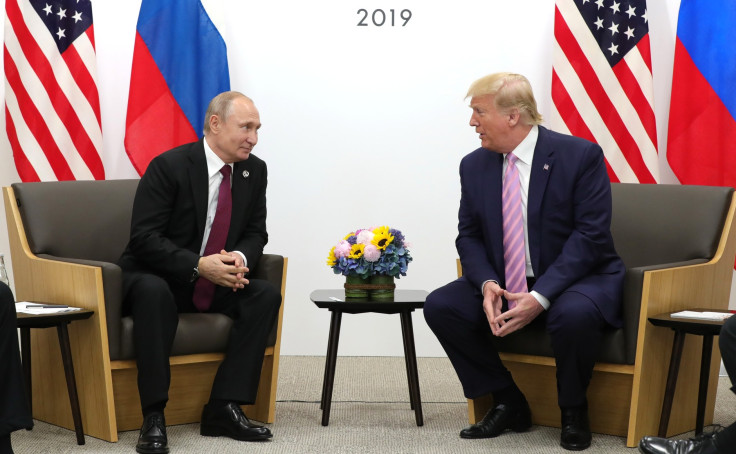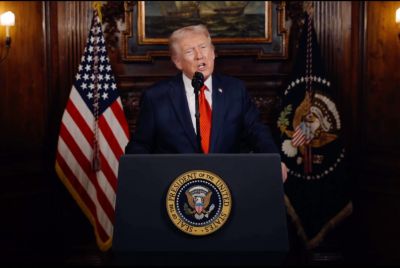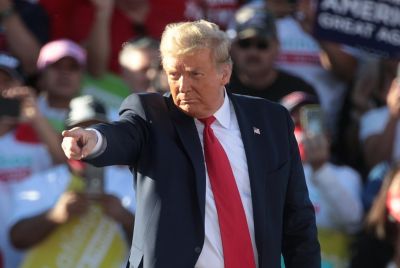Donald Trump Cabinet 'Bolted' to Secret Bunkers Amid Vladimir Putin 'Doomsday' Threats
Putin's nuclear doomsday scenario sparks panic. Experts warn of catastrophe as Trump demands U.S. nuclear tests.

Imagine a world where the shadow of nuclear war is no longer a relic of the Cold War, but a terrifying, imminent threat. Decades of simmering geopolitical tension between the U.S. and Russia have spectacularly boiled over, creating an open conflict that has millions—potentially billions—of lives hanging in the balance.
This isn't a scene from a dystopian thriller like Dr. Strangelove or The Day After; this is the grim reality experts are now urgently warning about.
The stakes were raised dramatically when former President Donald Trump ordered the testing of U.S. nuclear weapons for the first time in 33 years. This directive came via a blunt Truth Social post:
'Because of other countries testing problems, I have instructed the Department of War to start testing our Nuclear Weapons on an equal basis. That process will begin immediately.'
This action is a direct response to what many see as the increasingly unhinged brinkmanship of Russian President Vladimir Putin, who commands the world's largest nuclear arsenal—an estimated 5,580 warheads.
These warheads are believed to be aimed at major U.S. population centres, including Washington D.C., New York, Chicago, Houston, and Los Angeles.
With the U.S. possessing 5,225 nuclear warheads, the balance of terror is frighteningly close.
The Alarming Nuclear Stockpile and The Russian Doomsday Scenario
The sheer volume of these stockpiles is only one part of the escalating nuclear doomsday scenario. Experts are particularly concerned about the potential for a catastrophic alliance between Russia and China, which possesses an estimated 600 nuclear warheads.
Should the conflict widen, the world could fracture along nuclear lines, drawing in allies on both sides. The U.S. could see support from nuclear-armed nations like Britain, Israel, France, India, and Pakistan, while China and North Korea align with Putin's Russia.
This worst-case escalation could potentially unleash a barrage of 12,200 airborne nuclear weapons, a truly staggering figure. Sources suggest that under such conditions, as many as 2 billion lives could be at risk.
This projection alone is a chilling reminder of the unimaginable humanitarian crisis that a full-scale nuclear exchange would ignite.
Military analysts are clear that Putin has explicitly vowed to use nuclear weapons on the West should NATO or other nations significantly 'meddle' in his ongoing war against Ukraine—specifically by providing long-range missile systems.
The rhetoric emerging from Moscow is deeply provocative. Putin himself labelled Germany's plans to give Ukraine long-range missiles as a 'direct armed conflict' with his country, stating that NATO nations were effectively 'accomplices in their hostilities.'
Former Russian President Dmitry Medvedev further inflamed tensions by declaring that 'the delivery of these missiles could end badly for everyone,' explaining the difficulty of distinguishing 'a nuclear Tomahawk missile from a conventional one in flight.'
The inherent risk of miscalculation under such high-pressure circumstances could instantaneously trigger global devastation.
Retired U.S. Army Maj. Gen. Paul Vallely underscored the immediate danger, suggesting that Putin would likely first obliterate Berlin if Ukraine used any of the long-range missiles to strike 'valued targets' inside Russia. Vallely's final assessment serves as a stark warning to the American public and the world:
'Putin has nuclear weapons, and he's willing to use them. It's a doomsday scenario, and everyone in America should be worried.'
The terrifying reality of this escalating crisis is clear: the spectre of nuclear doomsday is not just a historical footnote but a terrifying, present-day threat amplified by reckless rhetoric and dangerous alliances.
With an estimated 2 billion lives potentially at risk and the leaders of nuclear-armed nations flexing their muscle, the world stands at a perilous crossroads.
© Copyright IBTimes 2025. All rights reserved.




















